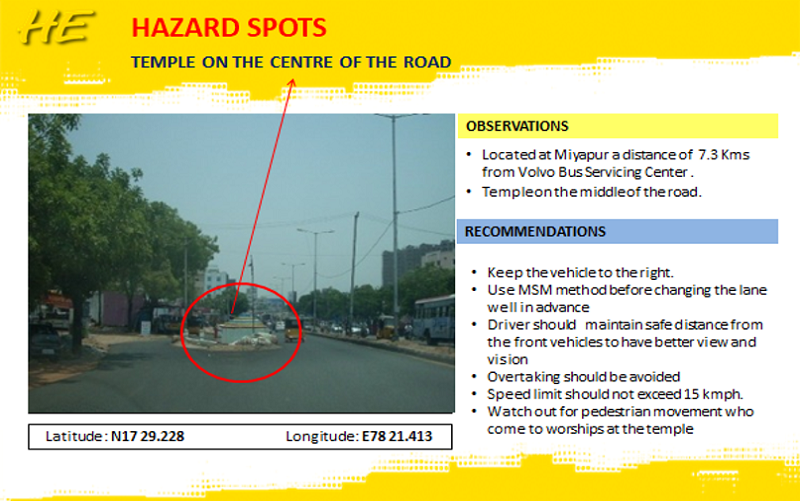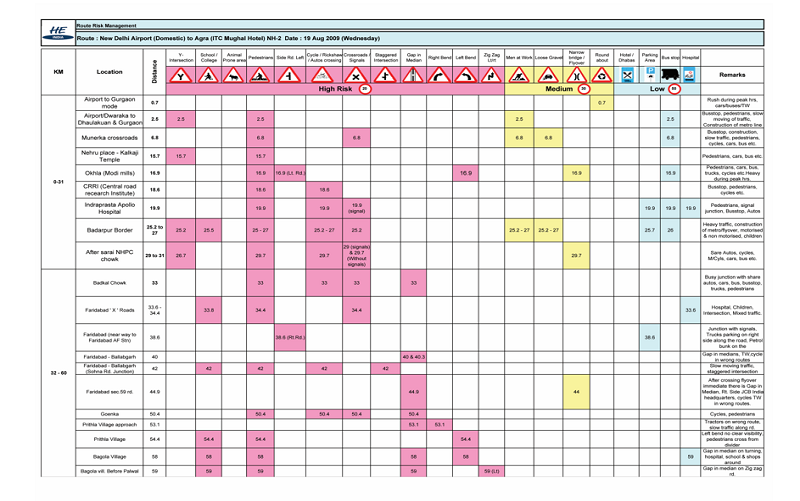Journey Risk Assessment
Objective
Journey Risk Assessment is a process that includes documenting the identified risk factors and corresponding mitigating measures on particular routes for ensuring safe driving on a given route. This could be applied to create a route risk assessment process. The JRA could use as an appropriate tool not only to mitigate the journey risks but also could be used to optimize the fleet operations by reviewing the appropriateness of a particular route or rescheduling of the trips.
Read more
Purpose
It can be applied for all heavy & light vehicles road journeys in any transport operations on public roads in high-risk geographies. Areas identified as high-must be managed to ensure that action is taken to mitigate the risks.

Content & Methodology
The process involves identification of all types of hazards and risks and providing accurate and adequate mitigation as risk reduction measures. All known hazards like steep gradients, narrow bridges, poor road surfaces, dangerous intersections etc.
Read more
are listed and mapped as per Low, Medium, and High-risk category and a mitigation plan is suggested, This could also include emergency help line services, such as police, ambulance and crane services. Route planning and scheduling must aim at avoiding hazards, unsuitable roads and congested areas as far as possible. Temporary route hazards (e.g. diversions, road works, flooded areas etc.) are identified and communicated to the driver before commencing journey. The route hazard maps could be supplied to each driver for every route. In nutshell, risk identification in journey is precisely done through this assessment.
Scope

